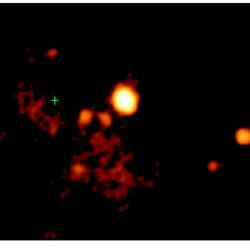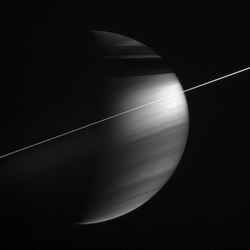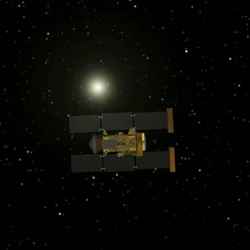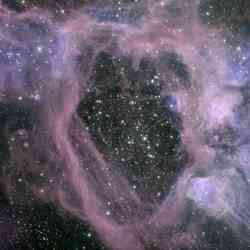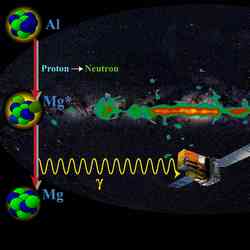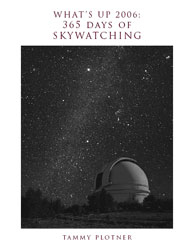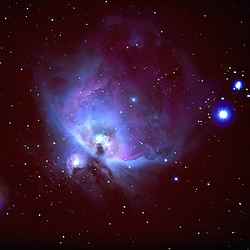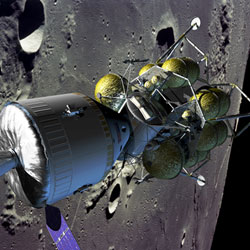نظریه سی پی اچ بر اساس تعمیم سرعت نور از انرژی به ماده بنا شده است.
سی پی اچ در ژورنالها
|
ده خبر جدید کیهان شناسی - انگلیسی
|
||||||||||||||||||||
|
10 new stories for 2006/01/09
|
|
An image of the central region of the starburst galaxy M82. Image credit: NASA Click to enlarge |
Jan 6, 2006 - Astronomers have found evidence of monstrous black holes at the heart of galaxies with the mass of millions of stars, or ones with just the mass of a single star. But not much in between (100 to 10,000 stellar masses). One of the newest pieces of evidence for a medium-sized black hole was captured by NASA's Chandra X-Ray Observatory. It measured the orbit of a star trapped in a death spiral around one of these medium-mass black holes. |
Hazy View of Saturn
|
Haze layers in the atmosphere encircling Saturn. Image credit: NASA/JPL/SSI Click to enlarge |
Jan 6, 2006 - This moody image of Saturn was taken by Cassini on December 5, 2005. It was taken using a special combination of the spacecraft's spectral filters to reveal delicate haze in its upper atmosphere. A methane-sensitive filter makes the high altitude features stand out, while a polarizing filter makes the small haze particles bright. The small white dot at the right side of the rings is Saturn's moon Dione. |
10 Days Until Stardust Returns
|
An artist's illustration of Stardust approaching Earth. Image credit: NASA/JPL Click to enlarge |
Jan 6, 2006 - NASA's Stardust spacecraft performed its 18th and second-to-last flight maneuver on January 5th, perfecting its aim for Earth. On January 15, 2006, the spacecraft will release its sample return capsule, which will re-enter the Earth's atmosphere. The capsule is carrying particles collected by Stardust as it passed through the tail of Comet Wild 2. NASA will then fly the capsule back to the Stardust Lab at the Johnson Space Center in Houston. |
Charon has no Atmosphere
|
An artist's conception of Pluto and its moon Charon. Image credit: NASA Click to enlarge |
Jan 5, 2006 - Astronomers from MIT and Williams College were fortunate enough to be watching Pluto's moon Charon at the moment that it passed in front of a very dim star. By measuring how the light from this star dimmed as it passed behind the tiny, distant moon, they were able to come up with a very accurate measurement of Charon's size (606 km or 377 miles). They also determined that the moon doesn't have any appreciable atmosphere, lending evidence that it was formed when something smashed into a proto-Pluto millions of years ago. |
When a Meteor Slashed Mars
|
Color view of 'butterfly'-shaped crater at Hesperia Planum. Image credit: ESAClick to enlarge |
Jan 5, 2006 - This image, taken by ESA's Mars Express spacecraft, shows an unusually shaped impact crater Hesperia Planum region of Mars. The crater is approximately 11 x 24 km (7 x 15 miles) across and has ejecta surrounding it where molten rock splashed around when a meteor carved it out. While most impact craters are circular, this elongated shape means that the space rock hit Mars at an extremely low angle (less than 10 degrees). Similar craters have been seen on the Moon. |
Superbubble Complex N44
|
Superbubble complex N44 as imaged with GMOS. Image credit: University of Alaska Anchorage. Click to enlarge |
Jan 5, 2006 - The powerful Gemini telescope produced this amazing photograph of the N44 superbubble complex (also known to astronomers as NGC 1929). A cluster of hot, young stars have pushed out a cavernous bubble in this nebula 325 by 250 light-years across. Additional smaller bubbles can be seen inside the nebula, which could have been formed by collapsing gas and dust. |
A Supernova Every 50 Years
|
An artist's illustartion of the sequence of radioactive decay that gives out gamma rays. Image credit: MPE Click to enlarge |
Jan 5, 2006 - A team of European astronomers has calculated the rate that supernovas are exploding in the Milky Way: approximately one goes off every 50 years. They came to this calculation by measuring the amount of gamma rays coming from radioactive aluminum at the centre of the Milky Way. They were able to estimate that there's a total of approximately three solar masses of radioactive aluminum in the galaxy - produced by supernova exploding every 50 years or so. |
What's Up 2006 - Download it Free
|
|
Jan 5,
2006 -
I'm sure some of you noticed we missed this
week's What's Up, and I apologize, my whole
family was a little sick this week, so I
wasn't able to put much work into the
website. However, I have a big surprise for
all of you. Tammy has been hard at work for
the last 4 months writing a book... for you. |
Astrophoto: Orion Nebula by Gregory Cranwell
|
Image credit: Gregory Cranwell. Click to enlarge |
Jan 5,
2006 - Gregory
Cranwell took
this picture of Great Orion Nebula on
November 24, 2005 from Tucson, Arizona.
Gregory used a LXD 75 Schmidt Newtonian 8"
with a Canon Rebel XT 8.0 megapixel digital
SLR. |
Leading the Way Back to the Moon
|
Computer illustration of the CEV in orbit around the Moon. Image credit: NASA.Click to enlarge. |
Jan 4, 2006 - The centerpiece of NASA's Vision for Space Exploration is the new spacecraft that will carry astronauts to the moon, Mars and beyond. Jeff Hanley, appointed as Constellation Program manager in October, discusses the development of the new Crew Exploration Vehicle, the role of the International Space Station, and the path of the 'Vision.' |
1 2 3 4 5 6 7 8 9 10 11 12 13 14 15 16 17 18 19 20 21 22 23 24 25
|
Sub quantum space and interactions from photon to fermions and bosons |
آرشیو موضوعی

از آغاز کودکی به پدیده های فیزیکی و قوانین حاکم بر جهان هستی کنجکاو بودم. از همان زمان دو کمیت زمان و انرژی بیش از همه برایم مبهم بود. می خواستم بدانم ماهیت زمان چیست و ماهیت انرژی چیست؟
